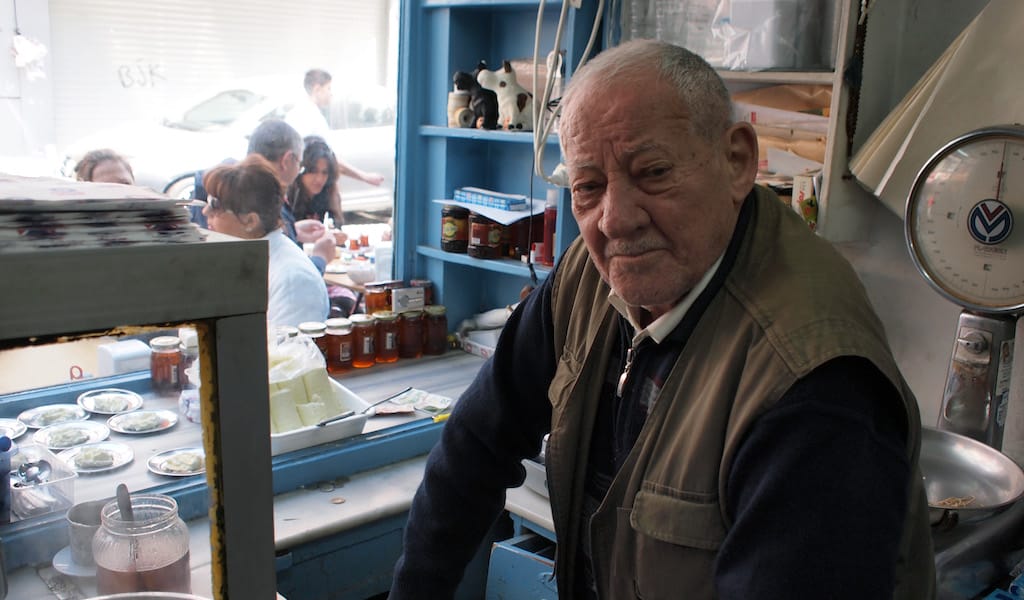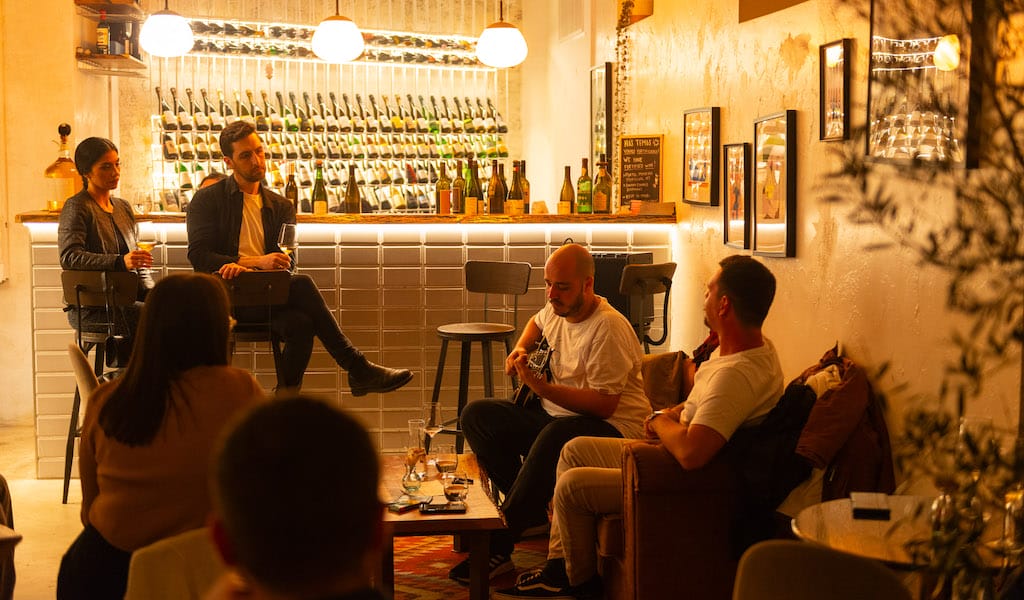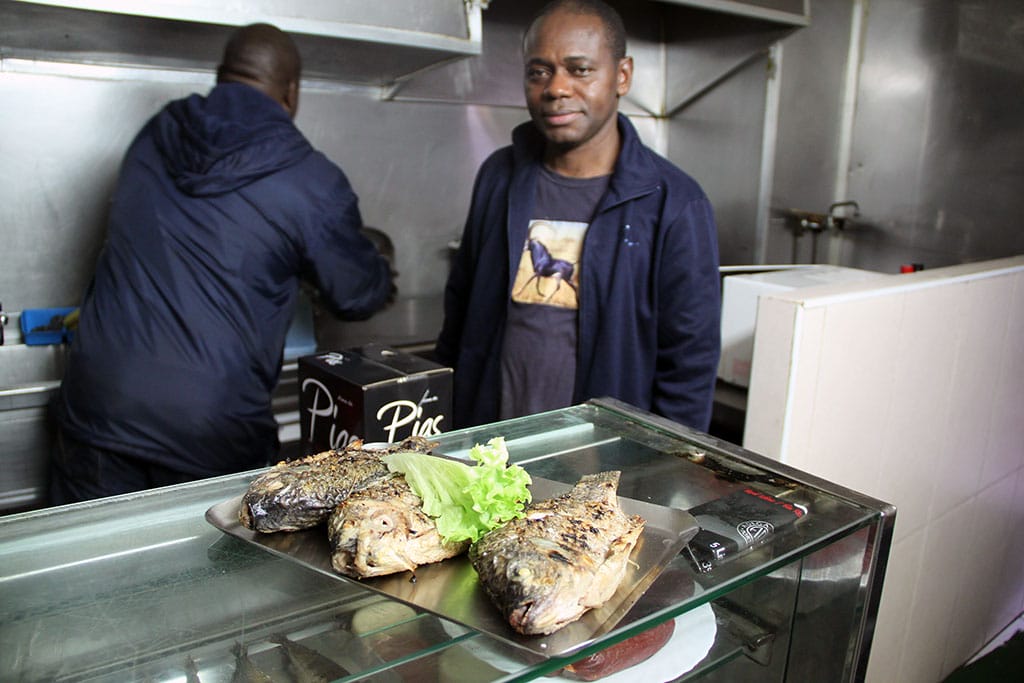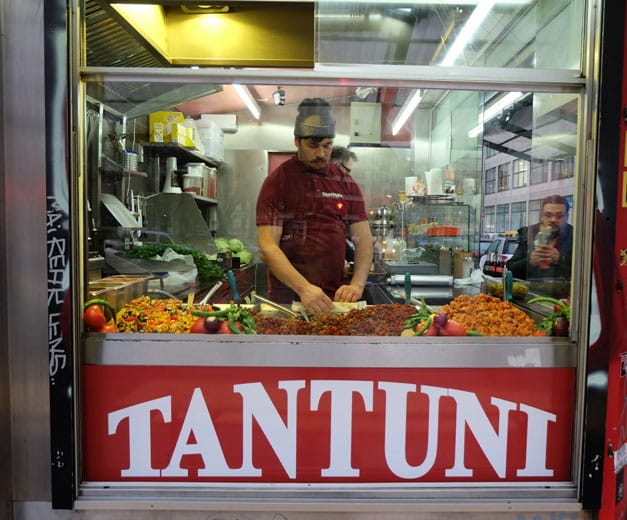It’s Saturday around lunchtime and business as usual in the bustling Beşiktaş Çarşı neighborhood, as crowds of mostly younger people fill the narrow streets. Down on Mumcu Bakkal Sokak, a pedestrian-only street lined with miniscule shops, a line around the block has been formed by those eager to get into one of the city’s best döner spots.
For many of those waiting in line, however, it’s impossible to ignore the scaffolding-covered building just across the way. Though the scaffolding masks most of the historic building, it’s still possible to make out strips of the distinctive baby blue color of what was one of Istanbul’s most beloved eateries: Pando’s kaymak shop.
In 2014, the owners of the building where Pandelli Şestakof, more commonly referred to as Pando Amca (Uncle Pando) by his beloved customers, and his family served breakfasts based around their famous kaymak – Turkey’s superior take on clotted cream – evicted the elderly tradesman from the same shop his grandfather opened in 1895, ending a nearly 120-year legacy and forcing Pando into unwanted retirement.

The years since were not kind to Pando, who passed away last week at the age of 96 after his kidneys failed. With Pando’s passing Istanbul’s endangered esnaf (small tradesman) culture has lost one of its eminent stalwarts, while the city has lost a link to a historical past that every day seems to further recede into the recesses of its collective memory.
Pando hailed from a Bulgarian family that emigrated to Istanbul from the southern Macedonian city of Bitola, then known in the Ottoman Empire as Manastır. The roots of the community that Pando belonged to are complex and harken back to the Ottoman past, when national identities were less defined – or constrained – by borders.
“Their ancestors were migrants and the language they spoke is closer to the present-day Macedonian language that was codified in the years after World War II,” said historian Aleksandar Shopov, who has studied the history of urban farming in Istanbul. “This community in Istanbul has an identity different than both the Bulgarian and Macedonian national identities.”
Thousands of Pando’s compatriots settled in Istanbul in the 19th century, likely in search of better economic opportunities in the imperial capital, though less than 500 remain today, following similarly bleak demographic trends of other non-Muslim minorities in Istanbul, many of whom departed in large numbers after the creation of the modern Turkish state in 1923. The Macedonian-Bulgarians that came to Istanbul during the Ottoman period quickly took up a number of trades, among the most notable of which was small-scale dairy production.
“In Istanbul, esnaf of Bulgarian origin were praised for their dairy products and much trusted for their honesty,” said food writer Aylin Öney Tan. Pando’s family was even famously known for providing Mustafa Kemal Atatürk, founder of the modern Turkish state, with their dairy products when he resided at Dolmabahçe Palace, the former Ottoman residence near Beşiktaş. Pando himself recalled once crossing paths with Atatürk as a young boy. Having lost Pando, perhaps the only connection left in the city to its Macedonian-Bulgarian dairymen is Boris’in Yeri, which opened up in the Kumkapı neighborhood in 1936. Though his name is still on the window, Boris himself passed away more than twenty years ago.
Kaymak is the king of the Turkish breakfast, a serious accolade for an illustrious meal defined by its high number of selections, consisting of dozens of small plates of cheeses, olives, egg dishes, jams and other items that often leave no room on the table. Boasting a sublime, creamy texture with just a touch of sweetness, it outshines even the best honey that it is usually paired with. Aficionados of this heavenly clotted cream insist that the best is made from the milk of water buffaloes.
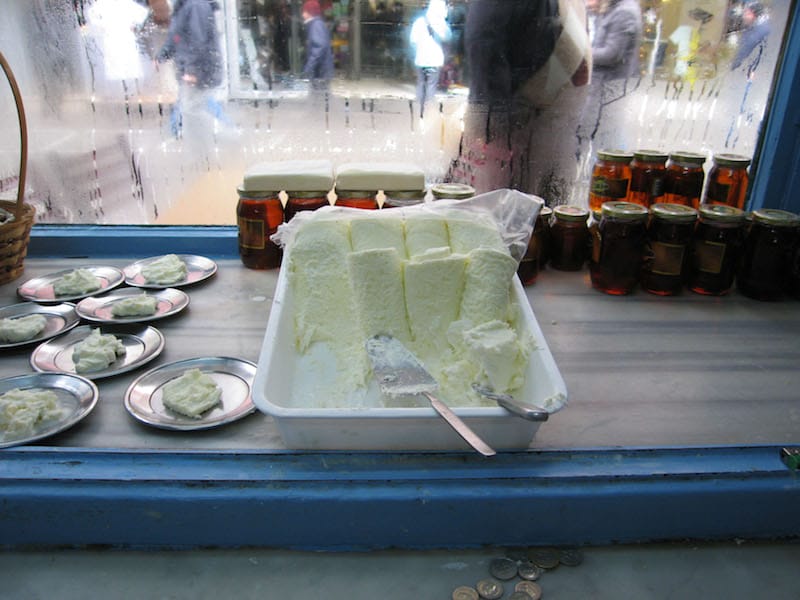
“Water buffaloes produce 15 liters of milk in a day while cows produce 40, so their milk is much more valuable,” said Ilhan Yalçın, who runs the iconic Göreme Muhallebicisi, a pudding shop his grandfather opened in the Kurtuluş neighborhood in 1965 and has since expanded with a number of branches serving their excellent desserts. The masters that taught Yalçın’s grandfather the trade themselves learned it from Bulgarians. Nowadays there is only one small dairy farm left in Istanbul, Yalçın said, the rest have moved to the districts of Silivri and Çatalca on the western edge of the province.
As Pando did for the entirety of his career, Yalçın only sells kaymak made from water buffaloes. Compared to cow’s milk, that of water buffaloes is much richer in its mineral content and is recommended to vegetarians for its high B12 and protein levels. It is praised for its taste, considered more filling and is even claimed to be an aphrodisiac.
“Pando was one of the few remaining artisans in Istanbul still using buffalo milk to make his signature kaymak daily. It was pure white (the sign of buffalo cream, whiter than fresh cows milk). As a flavor it was lush, creamy and thick, as good kaymak should be,” said Somer Sivrioğlu, an Istanbul-born chef who currently runs several successful restaurants in Australia – one of which pays homage to Pando by using the same blue color found in his Beşiktaş shop.
Pando’s menu was simplicity itself: kaymak topped with honey and served with a side of crusty bread. Menemen (scrambled eggs) and a glass of hot milk could also be ordered, but those always seemed to be beside the point. The store, which looked more or less as if it had been untouched since the day it first opened in 1895, had a handful of tables inside and walls covered with photos of Pando’s befezzed ancestors and drawings of the water buffalo herd the family once kept.
Pando, with his snow-white hair, pleasantly pronounced nose and endearing smile seemed harmless at first glance but he was known for being quite the prickly character. He was notorious for his cantankerous personality and penchant for occasionally charging diners whatever he felt like. This left some patrons with a bad taste in their mouth though many more became regulars in spite of his blustery ways. “Some of his customers did not like him, but they would still go there to eat,” said his nephew Aleks Kaçarof.
Pando was laid to rest last Thursday at a quaint Bulgarian Orthodox church and its adjacent cemetery in the Feriköy neighborhood. It was an unusually hot and bright early April day and the gleaming sun sliced through a clump of trees offering shade. In attendance were mostly aging members of his tiny community, along with a handful of loyal customers, who had come to pay their last respects to the man – quirks and all – whose kaymak had sustained them through the years.
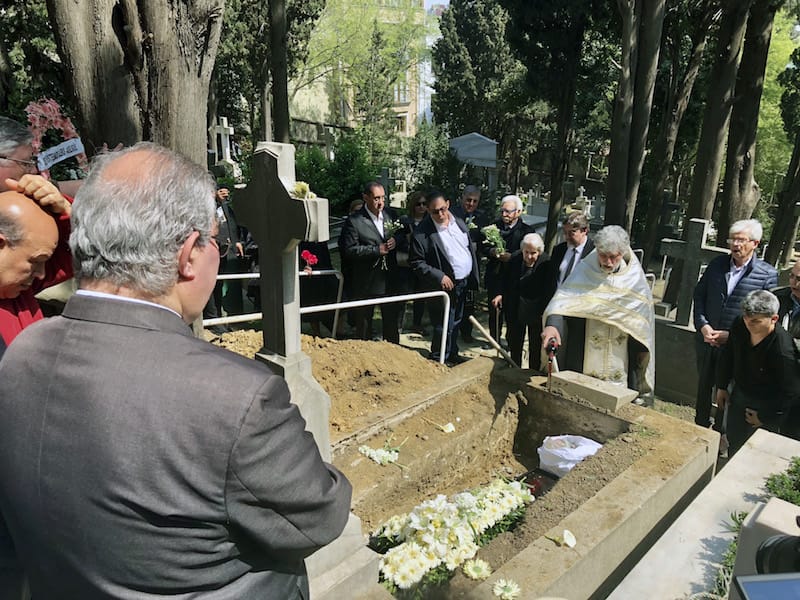
“He would get irritated when someone would order menemen with sucuk [a type of sausage]. He would say, ‘Menemen is not made that way!’” recalled one elderly former customer.
“One time a customer asked him for the bill and it was 35 lira. Then another customer asked for his check and Pando again said 35 lira. ‘But I didn’t eat as much as they did,’ the customer said. ‘Well if only you had!’ Pando replied,” recalled another longtime patron.
“We spent 54 years together and didn’t have a single bad day. He was a very good person, a gentleman with a big heart,” his wife Yuanna, herself an important fixture in the kaymak shop, said in a statement she read at the funeral. “He adored his family to the utmost degree,” Kaçarof said.
On September 6 and 7, 1955, in what went down as one of the darkest events in the history of the Turkish republic, nationalist mobs ransacked businesses operated by the city’s non-Muslims. Pando’s place was among those targeted. The rampage left the shop’s marble countertop cracked in pieces but Pando, refusing to submit to fear, simply glued them together and went about his business. A half century later, it was not nationalism but the banal mechanism of gentrification that ended up destroying the famous shop. Once the scaffolding is taken down from Pando’s old place, it will have lost all meaning, likely hosting yet another third-wave coffee shop or nondescript convenience store.
“That place represented a great memory for me, not for an experience I’ve lived but one I didn’t, an Istanbul that once existed,” said Semi Hakim, a former chef currently directing an Istanbul-based project that promotes small-scale food and agricultural projects. “Pando’s kaymak represented for me a nostalgic feeling for an Istanbul I would have much enjoyed to witness.”
Back at the cemetery, the pallbearers emerged from the church with casket in tow, gingerly settling it into the earth. Pando’s wife Yuanna, somber but composed, took a turn grasping a shovel and heaved a pile of dirt on her late husband’s grave. Mourners adorned the coffin with a blanket of white flowers and the priest poured out some red wine as per the Orthodox custom. The air was thick with the presence of Pando’s absence. The kaymakçı was gone, but legends never die.
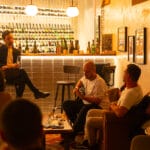 April 10, 2024 Black Sheep Lisboa
April 10, 2024 Black Sheep Lisboa
It was an unusual night. But Black Sheep is, admittedly, an unusual venue.
Lucas […] Posted in Lisbon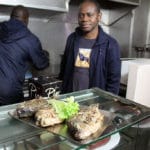 February 25, 2016 Palanca Gigante
February 25, 2016 Palanca Gigante
Update: This spot is sadly no longer open.
Palanca Gigante is an Angolan tasca in […] Posted in Lisbon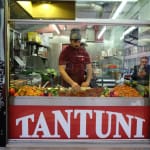 December 3, 2015 Toros
December 3, 2015 Toros
In Berlin, there is no shortage of meatless options, and vegetarians can even rejoice in […] Posted in Berlin
Published on April 16, 2018
Related stories
April 10, 2024
LisbonIt was an unusual night. But Black Sheep is, admittedly, an unusual venue. Lucas Ferreira, one of the co-owners of the Lisbon wine bar, had pulled out a guitar and was engaging in a jam session with a former bandmate. For a good 45 minutes, the normally buzzy bar was on pause: the chatter had…
Visit locations like this on our Lisbon Food Tours!
February 25, 2016
LisbonUpdate: This spot is sadly no longer open. Palanca Gigante is an Angolan tasca in multicultural Mouraria, Lisbon’s medieval downtown district. The restaurant is named after a critically endangered species of antelope (the palanca negra gigante, or giant sable antelope) that was adopted as an Angolan national symbol after that country’s independence from Portugal in…
December 3, 2015
BerlinIn Berlin, there is no shortage of meatless options, and vegetarians can even rejoice in a seitan-based döner kebab that is given the proper spit roast. What did surprise us is that the ubiquity of vegetarian diets in the city has greatly impacted one version of a meat-centric Turkish street food classic. Toros Tantuni is a…







































